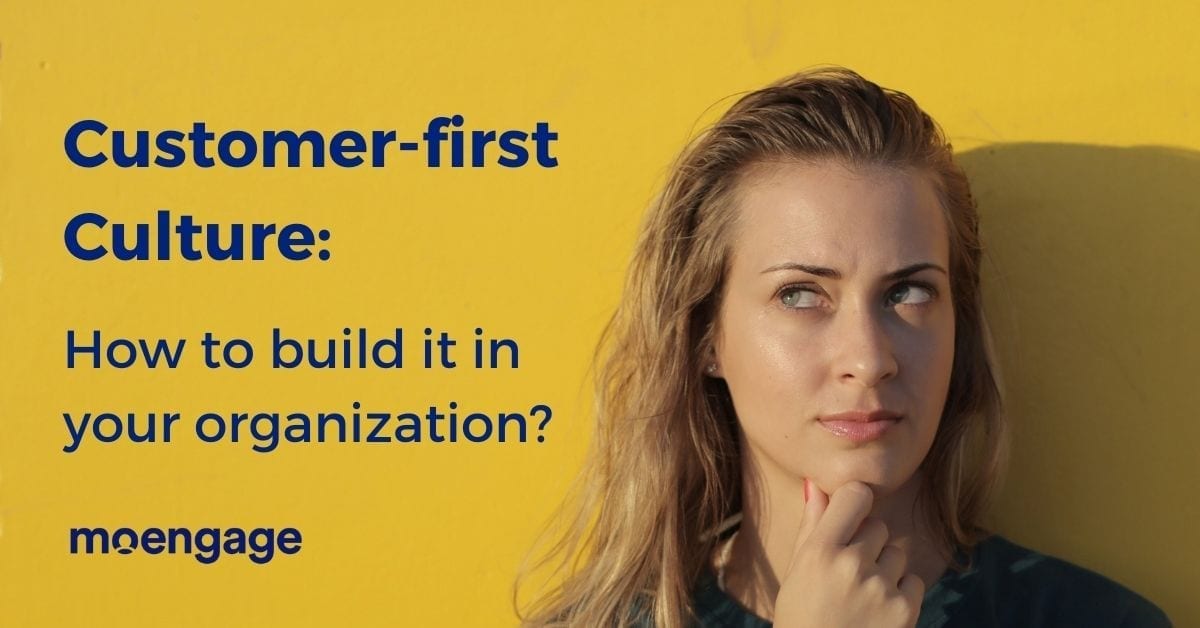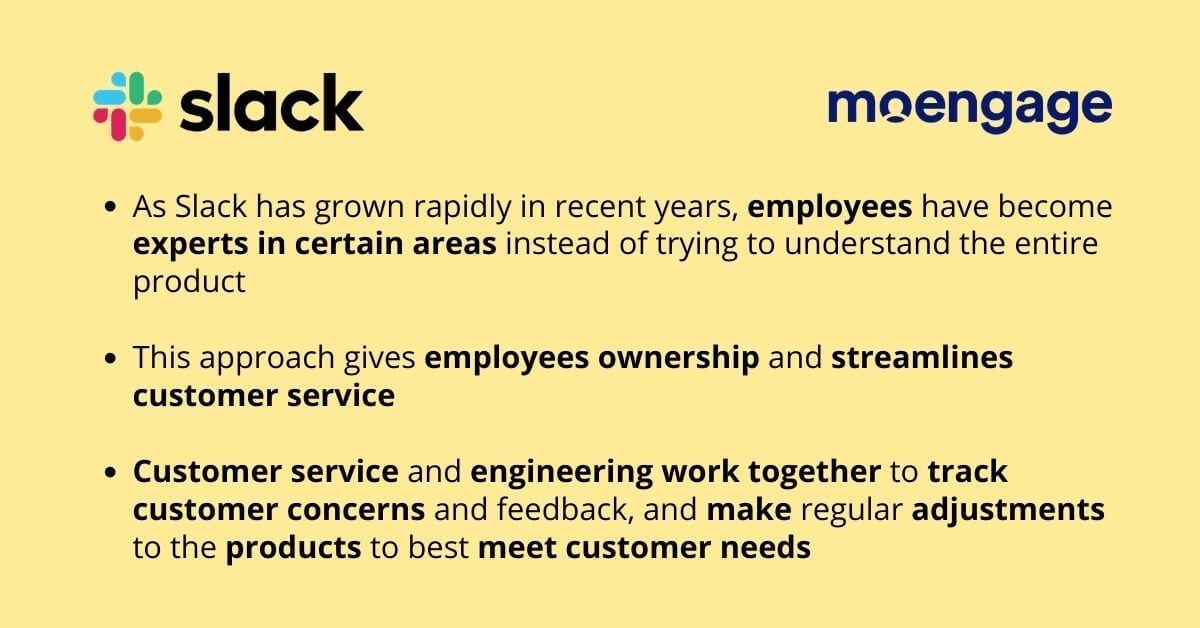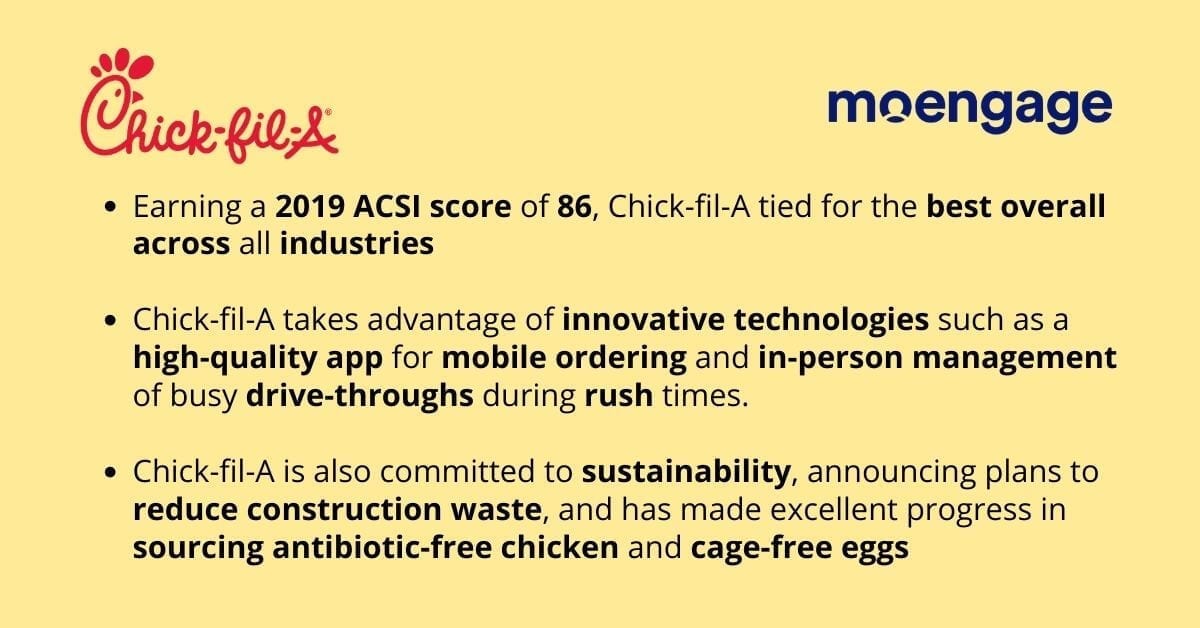11 Steps To Building Customer-first Culture in Your Organization

Reading Time: 6 minutes
Note: This article is a part of our special series focusing on the importance of an intelligent customer engagement platform and how you can choose one.
Many companies have discovered that creating and maintaining a successful business in the age of the customer depends, first and foremost, on building a customer-first culture. In such an environment, leaders and employees need to understand the company’s brand promise and should be committed to delivering an exceptional experience.
Customer obsession plays a critical role in aligning functions, enabling agility, and spurring innovation.
| Bonus Content |
Order our Buyer’s Guide and get detailed insights on building customer-centricity and exhaustive selection criteria for choosing the right engagement platform!
In our Buyer’s Guide, you’ll get expert insights, use cases from top global brands, get a resolution to buy vs build problem, understand if point solution is better or an integrated platform, among a host of other valuable inputs. But before that, let’s dive into the point of discussion for this article.
Basic tenets of building customer-first culture in your organization
1. Develop collective focus: Companies that provide superior customer experience have a strong shared vision. They drive customer obsession and centricity from the top-down. Customer obsession needs to be a part of executive conversations, business planning, pipeline reviews, and shareholder meetings. From product developers and designers to sales, customers should be the company’s number one priority. To develop a strong collective focus, invest in training, provide customer feedback to all employees, and listen to employee inputs to improve customer experience. You can also make use of an employee training plan template to ensure that you are consistent each time you carry out an onboarding program.
2. Cultivate external perspective: Rather than looking first at internal goals and capabilities, take an outsider perspective, looking at your brand promise from the customer lens. Continually track customer feedback and behavioral data, and determine key metrics for customer experience. Tie them to the value adds. Consider acquisition, social dialogue, referral, retention, and churn rates. Leverage customer feedback by distributing it across marketing, product, sales, and service.
3. Empower employees to spur innovation: While building a customer-first culture, place a premium on innovation. Your policies should make risk a virtue if it produces an exceptional customer experience. To promote innovation, empower employees with information and give them the autonomy to make decisions that can improve products and services. It can help employees try out novel ideas, take carefully considered risks, and feel greater ownership of the customer experience. Also, it will be beneficial if you use employee tracking apps, which will help your teams to effectively build strong relationships with customers.
4. Focus on quality over quantity: Customer-obsessed companies are less focused on the size of their customer base but more concerned with the relationship they have with their users. They’d rather close a deal with one loyal user who will come back repeatedly instead of three quick sales that will likely churn after a couple of months.
Customer obsession is probably the most important attribute associated with Amazon. It is the first of their 14 Leadership Principles, and the company famously leaves one open chair in every strategic meeting to represent the customer – a reminder that the customer should always have a seat at the table.
5. Prioritize retention and understand churn: Once a deal is closed, add more value to the customer’s experience. It increases the chances of retention (five to twenty-five times cheaper than acquiring new users). To improve retention and reduce customer churn, understand loyalty, and why customers are leaving. Analyze behavioral data, conduct surveys, and interact with customers to get a better picture.
6. Be driven by customer feedback: Before you make any changes to the customer experience ask your users how they feel about availing of your services. Use NPS to gather quantitative and qualitative feedback so your team can make informed decisions.
7. Analyze and distribute customer data routinely: Analyze customer data for trends and common problems. Share your findings with the rest of your organization. This data helps marketing, sales, and customer service teams delight your customers. Being data-oriented is absolutely essential to being customer-obsessed. This is backed by Forrester data which reports that insight-driven public companies are expected to grow to $1.2 trillion in revenue in 2020 from $333 billion in 2015.
8. Focus only on what matters to your customer: Being selective and being customer-obsessed are seen to be at different ends of the spectrum but it couldn’t be farther from the truth. One of the biggest misconceptions about customer obsession is that it means being everything to everyone or delivering unscalable wow moments each time. It actually means being great at things that your customer really cares about. It doesn’t really matter if you are good at things that don’t move the needle as much.
9. Being committed to customer obsession: Many enterprises already focus on meeting customer needs but they make the critical mistake of not doing it in real-time.
10. Hire the right people to create the right culture: Hiring people with a prominent customer-centric approach to decision-making and communication is essential. Customer-centricity is the key to growth strategy. The right hires should be able to make decisions by looking through the customer lens and have an authentic passion to delight customers. Selecting key metrics to measure and holding team members accountable for providing a great experience is the key to determining if your organization has succeeded in becoming customer-obsessed. There are many job board examples you can check out in this process, which will allow a larger pool of candidates and a more effective hiring process.
A DMS study found that companies are seven times more likely to close a sales opportunity when they reach out to a customer within an hour of the customer contacting them. Unfortunately, two-thirds of companies don’t have a system for delivering real-time service. This can prove fatal as customers today have a strong voice and bad news travels fast over social media.
11. Change communication tone and messaging: Changing communication from me/I to us/we/you can have a major impact on how customers perceive a brand during an interaction. Right habits and mindsets can be inculcated by practicing customer-obsessed language during routine conversations with co-workers, partners, and stakeholders.
Perks of building a customer-first culture
According to Forrester’s Customer Index:
- CX leaders gained 43% in performance compared to CX laggards who saw a 33.9% decrease
- Outperforming companies are 54% more likely to collaborate extensively with their customers
- Outperforming companies are 24% more likely to give customers a seat at the boardroom table
- 86% of buyers will pay more for a better experience
- A customer is 4X more likely to buy from a competitor if the problem is service-related vs price/product-related
- 70% of buying experiences are based on how the customer feels they are being treated
Examples from the most customer-obsessed companies
1. Hilton provides incredibly personalized service and a seamless connection between offline and online interactions. The brand has earned an ACSI (American Customer Satisfaction Index) score of 80, tied for the best among hotels. Innovation is part of the organization, evident from Connected Rooms, which remembers a guest’s preferences such as favorite TV channels, room temperature, and light settings, thus making automatic adjustments each time the customer checks in.
2. Slack

3. Natura, the Brazil-based cosmetics company, was named the 15th most sustainable company in the world in 2019 owing to the continued efforts to source sustainable ingredients from the Amazon and providing 2,000+ jobs to locals. Natura also has an industry-leading digital strategy that relies heavily on mobile. The streamlined communication helps them gather valuable customer data to personalize and improve the user experience.
4. Chick-fil-A

5. USAA: With a Net Promoter Score four times the average score for banking, USAA has loyal customers because it treats them like people, not just numbers. USAA appreciates employee feedback and has put hundreds of employee suggestions into practice. Innovation is encouraged and expected with a best-in-class mobile app that supports augmented reality. Every channel is designed to be used the way customers naturally use them.







